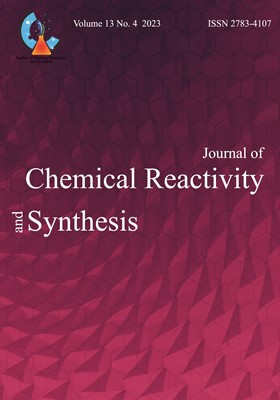-
-
List of Articles
-
Open Access Article
1 - First Principles calculation High Spin to Low Spin transition in the SrMnO3 and the CaMnO3 compound
Narges Saki Azadeh Aezami -
Open Access Article
2 - Synthesis and Physicochemical Characterization of New Amidic Derivative of Sodium Alginate
Shokouh Khodayar Mohammad Reza Shushizadeh Elham Tahanpesar Behzad Sharif Makhmalzadeh Haleh Sanaeishoar -
Open Access Article
3 - New results on the extraction of Lithium ions from salt lake brine using ionic liquid tributyl phosphate
Abdloreza Hormati Bahram Rezai Hadi Hamidian Shoormasti Ghodratollah Rostami Paydar -
Open Access Article
4 - Spectroscopic study of diphenyl [(S)-(–)-1-phenylpropanamido]-phosphate: differences of diastereotopic groups
Farnaz Eslami Mehrdad Pourayoubi Fahimeh Sabbaghi Sahar Baniyaghoob -
Open Access Article
5 - Ultrasound- and Magnetic Assisted Dispersive-Micro-Solid-Phase Extraction followed by Atomic Absorption Spectrometry based on Carbon Quantum Dots Functionalized with Magnetite/Zeolitic Imidazolate Framework 71/Polypyrrole for Determination and Trace Monitoring of Pb (II) in Water and Food Samples
Elnaz Nakhostin Mortazavi Mohsen Zeeb Seyed Saied Homami -
Open Access Article
6 - Studies on Mechanism of Formation and Medicinal applications of structurally diverse Indole and Oxindole derivatives
Noor ud Din Zargar Khaliq Zaman Khan
-
The rights to this website are owned by the Raimag Press Management System.
Copyright © 2021-2025







